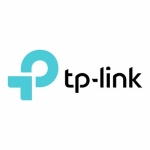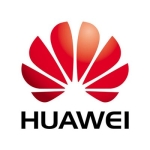What is our primary use case?
For the enterprise-level solution, it's for small to medium businesses. I'm quoting NETGEAR to pretty much everyone, instead of any other type of switch.
In terms of the NETGEAR models we use, it depends on the situation. We've used 4300s, 3300s, we've used a lot of Smart Stacks and Smart Switches and Plus Switches. We don't use really anything that can't be slightly managed, so it has to have at least a web interface.
How has it helped my organization?
We're an MSP. Let's say we do an entire network retrofit with a customer. We're talking about increasing bandwidth backbones ten to 20-fold, from one gigabit to 20 gigabits, utilizing the virtual stacking with the switches. It allows our workflow, managing their systems, to be quick and easy. We can do it remotely very well and we can do a lot of very granular programming changes without having to be onsite.
It's hard to give you metrics because what we do is rebuild entire networks, and most of them are old and dilapidated. They may have been okay in their day, but we're talking 10-year-old networks a lot of times. What we're doing is increasing their bandwidth, increasing security, and increasing the flow of traffic and data, depending on type, etc.
What is most valuable?
- Network monitoring
- Ease of programming for VLANs, etc.
Also, I especially like NETGEAR because it's easy to teach system administrators how to use them, how to look at them, how to make changes to them without having the complexity of CLIs, but still having a CLI should we need it.
What needs improvement?
There's very little that I see as having large room for improvement, as far as the switches we're using go, for the most part. What I'd like to see is more compatibility with virtual stacking, so that 4300-series switches and 3300-series switches will actually stack together and that virtual switch stacks, themselves, are not limited to just six devices, so that they can create larger loops with more bandwidth and more redundancy.
I like the NETGEARs because they do everything exactly how I want them to, for the most part. There's not a lot that I would require for them to do better. It might be nice to see the little things like providing some switches with four SFP ports like they used to have, instead of just two, in those lines that we're looking at on the stackable side. Right now, it seems I have to have either eight SFP ports or two and there's no in-between, that's also stackable and managed, or at least stackable. The problem is that there's got to be enough of a need for them to actually create them. For me, those are little things that I would like to have, just to allow for a little more flexibility in what we're doing.
Buyer's Guide
NETGEAR Switches
August 2025
Learn what your peers think about NETGEAR Switches. Get advice and tips from experienced pros sharing their opinions. Updated: August 2025.
867,370 professionals have used our research since 2012.
For how long have I used the solution?
One to three years.
What do I think about the stability of the solution?
Regarding the switches, etc., the uptime is going to be comparable, the same as any other types of Ethernet switches that would be fulfilling the same roles. It may even be better in some cases because of the ability to have lifetime warranties and replacements.
What do I think about the scalability of the solution?
I've currently maxed out the scalability of the switches, and this revolves around the virtual stacks. I would love to be able to add more switches into the virtual stacks. That's probably the only expandability I worry about right now. We've just implemented 10-gig to 20-gig connections, so we're pretty much at the top end of the spectrum.
The thing we would like to do at some point is to start looking at the 2.5-gig and 5-gig switches, possibly, for access points. But I think I might just go straight to 10-gig to be future-proof. They already have those switches in place. The industry itself is not going at that speed at the desktop level, so they're perfectly positioned. The scalability is such that it wouldn't have to be done for another four to five years and maybe not even then.
How are customer service and support?
I have limited experience with their technical support because the switches are easy enough to understand so I haven't needed it much.
As far as the technical support we have gotten, it's more the automated technical support that I would like to see. I'd like to see a better Knowledge Base, better articles, things written by NETGEAR engineers to explain step-by-step how-tos, not just for me, but so that I can give them to my technicians and assistant administrators. It would be helpful if they could look at them on the screen and know how to do things, as opposed to having to call someone.
If we have to call someone, then it's already gone beyond the point of getting help. It means we probably need to replace the device.
Which solution did I use previously and why did I switch?
Previous solutions were all over the place. I've always liked NETGEAR, I've always liked their price point. I've used them pretty much everywhere that I can, at least on the business level. I'm not really fond of the consumer grade, but I work in a business atmosphere so consumer grade shouldn't be there anyway.
We've used the Ciscos, we've used Dell EMC, we've used HPE. They're all good, but NETGEAR has really cleaned up its act and made it look good and easy to use.
How was the initial setup?
For the initial setup with the NETGEARs, there could be a little bit better help documentation for it. Small how-tos, and better explanations of what all the features are, because they do have a lot of features - which is wonderful. That involved a little bit of a ramp-up time, but it really wasn't a whole lot.
The initial setup is really easy with them. It's easy to create a standard setup with them that can then be repeated across multiple customers, which then helps when technicians are maintaining them.
We do multiple deployments. One deployment, for a small business, could take a few days. Another deployment for a medium-sized business, depending on the number of locations, could take a few months.
For instance, one of our customers has six locations across the United States, so we had to be able to get to those locations and then set up for, and be ready for, the entire installation and replacement of the old switches with the new. That implementation took time because it had to be planned. This particular customer is a 24/7 customer, they never go down. We were trying to maintain as close to a 99% uptime as possible, while still replacing their entire infrastructure.
The switches themselves have can be worked pretty flawlessly and quickly and enable us to make on-the-fly configuration changes onsite very quickly. One of the other reasons I like them is because it's just that easy to use them.
Our implementation strategy is typically trying to schedule some amount of downtime and then checking on the configs of the old switches, possibly pre-programming switches before they come into place, if I have that capability. We then bring those switches in onsite, bring the old switches offline, and put new NETGEARs in online. That is for existing customers. For new customers, we just program ahead of time and almost just drop them in and they're ready to go at that point.
As to whether you need to be an IT expert to deploy and support such a network, it depends on what you consider to be an IT expert. I think I'm an IT expert and I can do it. Someone at a much lower level than mine can also deploy and maintain these Ethernet switches. Are they IT experts? Well, it depends on what they know.
The problem is that I'll see people who think they're IT experts but they know very little about actual IP and VLAN-ing and the like. They don't really know what Layer 2 or Layer 3 is or what the whole OSI structure is. It depends on what you call an expert: Is it someone who knows the whole structure or is it someone who knows the intricacies of routing BGP and OSPF and RIP? You don't need to be at the CCNP level. You don't even really need to be a CCNA-level, if we're talking about Cisco equivalency, because it's very easy to do but also very easy to teach.
What was our ROI?
We have not yet seen ROI. It's only been a couple of years since we first started. The return on investment is going to be hard to put a number on a because we sold these and they're working really well. If it continues the way it's going, then we're going to make a healthy profit, while still providing top-tier support for our customers with top-tier equipment.
What's my experience with pricing, setup cost, and licensing?
It's a great price-to-performance solution. I think it's singularly the best price-per-performance we can find, if not just straight performance to begin with.
We like the idea that they're going with the Insight Pro licensing. We like that it's a per-device and it's handled by us, the MSP, versus being handled by them. For instance, with the Merakis, all the licensing is handled by Meraki, and Meraki will try to undersell you or sell you right out of your own client, when it comes to reopening subscriptions.
NETGEAR has taken a different approach and values its partners much better. That's something that's very important to me. There's not a lot of need for licensing other than that, because, while I can buy some types of subscription for some of these, for support and such, we don't really need them. They have a lifetime warranty and we have staff on hand to be able to handle most of the more complex issues that we would have, other than things that need hardware replacement.
The cost of hardware and additional services is lower, absolutely. I wouldn't say "low," but we found it to be lower than other options, and that helps us resell this back to customers who are looking at other things like a Cisco Meraki, where the money is very important. On the school level, municipalities have very limited funds and if they can get more bang for their buck and it really means that much more, then it's a lot easier to sell a NETGEAR than a Cisco Meraki, especially since the longevity is there and there's a better warranty on them.
Which other solutions did I evaluate?
We've looked at Cisco's Merakis vs NETGEAR and HPEs vs NETGEAR and done price comparisons versus manageability, but the NETGEARs, far and away, were better. Merakis are very good, but the price point is way too high, and the required subscriptions could leave some of our smaller customers without connections because they're forgetful or just don't know to do these things or don't want to pay for them, constantly, like that. I like the way that NETGEARs work. They go well with our business model.
We did not consider Ubiquiti. We need something more mainstream and we weren't willing to go with them. We don't think they've been in the game enough.
What other advice do I have?
Strongly consider using NETGEAR in replacement of some of the other larger switch manufacturers. Recognize that the manageability is there at a lower level so you can employ less-highly-skilled people to maintain the devices. As far as small and medium businesses go, they need to be able to have that ability because they don't always have dedicated IT people. You're better off going with this type of implementation because the features are there, the ability to program is there, and the ability to understand them is far easier than it is for a lot of others, making the implementation a lot easier.
In terms of the AV over IP, we split everything up in the VLAN so we don't differentiate AV. We don't have a lot of AV traveling over the networks, just yet, other than the occasional IP camera. Most of them are still in their own switch network.
Deployment could take one or two people. A lot of times it would be myself as the network architect and then another system administrator to help move things, unplug things. It's more of a physical issue. The switches themselves are very quick and easy and barely even take any time out of my schedule. I don't really schedule for them because they can be done on the fly. It's more about the physical limitations that cause scheduling to go awry.
As for extent of usage, for us, any new or refurbished network is 100 percent NETGEAR as far as the backbone and switching go. We will continue to be using them. They're making good advancements in their product lines and they're well-positioned where they are now for how we need to use them. I'm very happy with them.
I would rate NETGEAR at about an eight out of ten, only because I always think everyone has room for improvement. As I said, they need a little bit better Knowledge Base, they need a little better help or support online, directly on the switches or from the switches. Documentation is key for me. And, as I said, I need more stacking when I do virtual stacks. I want to be able to do a lot larger virtual stacks.
Disclosure: PeerSpot contacted the reviewer to collect the review and to validate authenticity. The reviewer was referred by the vendor, but the review is not subject to editing or approval by the vendor. The reviewer's company has a business relationship with this vendor other than being a customer: Reseller.















Having no fan means no noise. However, on the downside it heats up the machine a lot and needs rebooting. How often it needs to be reboot and in what interval. If not taken care,then there is a high probability that overheating may lead to malfunctioning of some parts thus causing sever network issues.